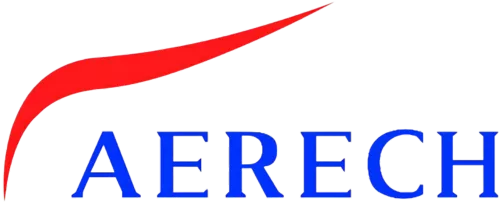When it comes to connecting your devices, you may have heard of DAC and AOC cables. But do you know the difference between the two? In this blog post, we’ll discuss the difference between a DAC Cable and an AOC Cable, helping you to choose the right one for your needs.
What is a DAC Cable?
A DAC (Direct Attach Cable) is a passive copper cable that connects two network components directly, without the need for an intermediary device. A DAC cable consists of several insulated copper wires which are then twisted into pairs and shielded with a foil wrap or braided sheath. This type of cable provides a reliable and cost-effective connection between computers, switches, routers, and other networking devices.
DAC cables can be divided into two categories: active and passive. An active DAC uses a transceiver to amplify and send data over the cable, while a passive DAC simply transmits data over the cable without any power source. Active DACs are more expensive than passive DACs, but they offer higher speeds and reliability.
In comparison, an Active Optical Cable (AOC) is an optical fiber cable that transmits data over fiber optics rather than copper. AOCs use transceivers at both ends of the cable to convert electrical signals to optical ones and vice versa. AOCs are more expensive than DACs and require special tools for installation, but they offer higher bandwidth and longer distances.
Another variation of DAC is a 40G/100G DAC breakout cable. This cable is used to convert a 40G or 100G single-lane electrical connection into four lanes of 10G or 25G connections. This is especially useful in high-speed networking where each port needs a separate 10G or 25G connection, as it allows a single port to transmit at up to 40G or 100G speeds without needing four separate ports.
What is an AOC Cable?
An Active Optical Cable (AOC) is also known as a Direct Attach Cable. It is a high-speed cable that connects the host system to peripheral devices, such as storage drives or networking equipment. An AOC is different from a traditional copper cable because it uses optical fibers instead of electrical signals. This allows for faster speeds over longer distances than regular copper cables. AOCs have the advantage of being more reliable, providing improved signal integrity, and decreasing electromagnetic interference. They are thinner, lighter, and more flexible than traditional copper cables, making them easier to install in tight spaces.
A 40G 100G AOC breakout cable is an Active Optical Cable that is split into four separate lanes. This allows four different devices to be connected to the same AOC cable, allowing for greater flexibility when connecting multiple devices to one system. 40G 100G AOC breakout cables are ideal for applications that require high-speed data transfer, such as in cloud storage networks, server farms, routers, and switches. By using an AOC breakout cable, multiple devices can be connected to one cable, reducing clutter and increasing efficiency.
The Differences Between DAC and AOC Cables
DAC (Digital Audio Cable) eta AOC (Active Optical Cable) cables are two different types of cables that have very different purposes. DAC cables are used to transmit digital audio signals, while AOC cables are used to transmit digital video signals. The differences between these two types of cables are important to understand, as they each offer different features and benefits.
DAC cables are the more commonly used type of cable, as they are designed to carry digital audio signals. These cables use copper wiring and a range of shielding materials to ensure that the signal is transmitted with no distortion. DAC cables also support high-definition audio formats, so they are often used to connect home theater systems or gaming consoles to an audio device.
AOC cables, on the other hand, are designed to carry digital video signals. These cables use light transmission instead of copper wiring, and the signal is protected from interference with special shielding. This makes them ideal for connecting devices such as computers and projectors to monitors and TVs. AOC cables can also support high-resolution video formats, which makes them perfect for watching 4K movies or playing video games in ultra-high definition.
In summary, there are some major differences between DAC and AOC cables. DAC cables are designed for transmitting digital audio signals, while AOC cables are designed for transmitting digital video signals. Both types of cables offer excellent protection from interference, but AOC cables provide the added benefit of supporting ultra-high-resolution video formats. Understanding the differences between DAC and AOC cables can help you choose the right one for your needs.
What DAC/AOC cables can Aerech Networks provide?
Aerech Networks can provide:
- 10G SFP+ DAC Active/Passive cable, 10G SFP+ AOC cable
- 25G SFP28 DAC cable, 25G SFP28 AOC cable
- 40G QSFP+ DAC Cable, 40G QSFP+ AOC cable, 40G QSFP+ to 4x10G SFP+ DAC breakout cable, 40G QSFP+ to 4x10G SFP+ AOC breakout cable,
- 100G QSFP28 DAC cable, 100G QSFP28 AOC cable, 100G QSFP28 to 4x25G SFP28 DAC breakout cable, 100G QSFP28 to 4x25G SFP28 DAC breakout cable
If any upcoming networking solutions projects that may require DAC and AOC cables in the future, welcome to send inquiries to us.



